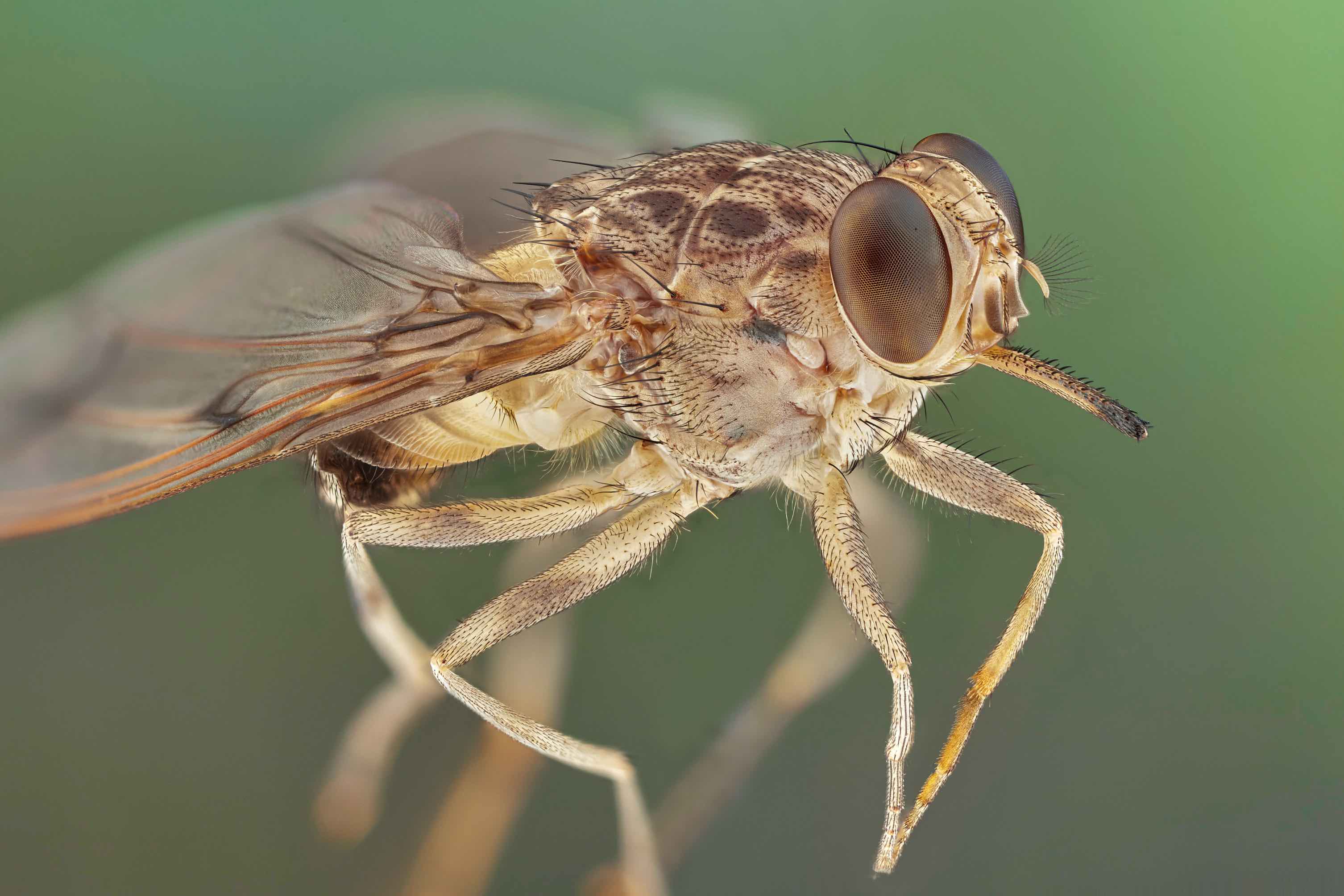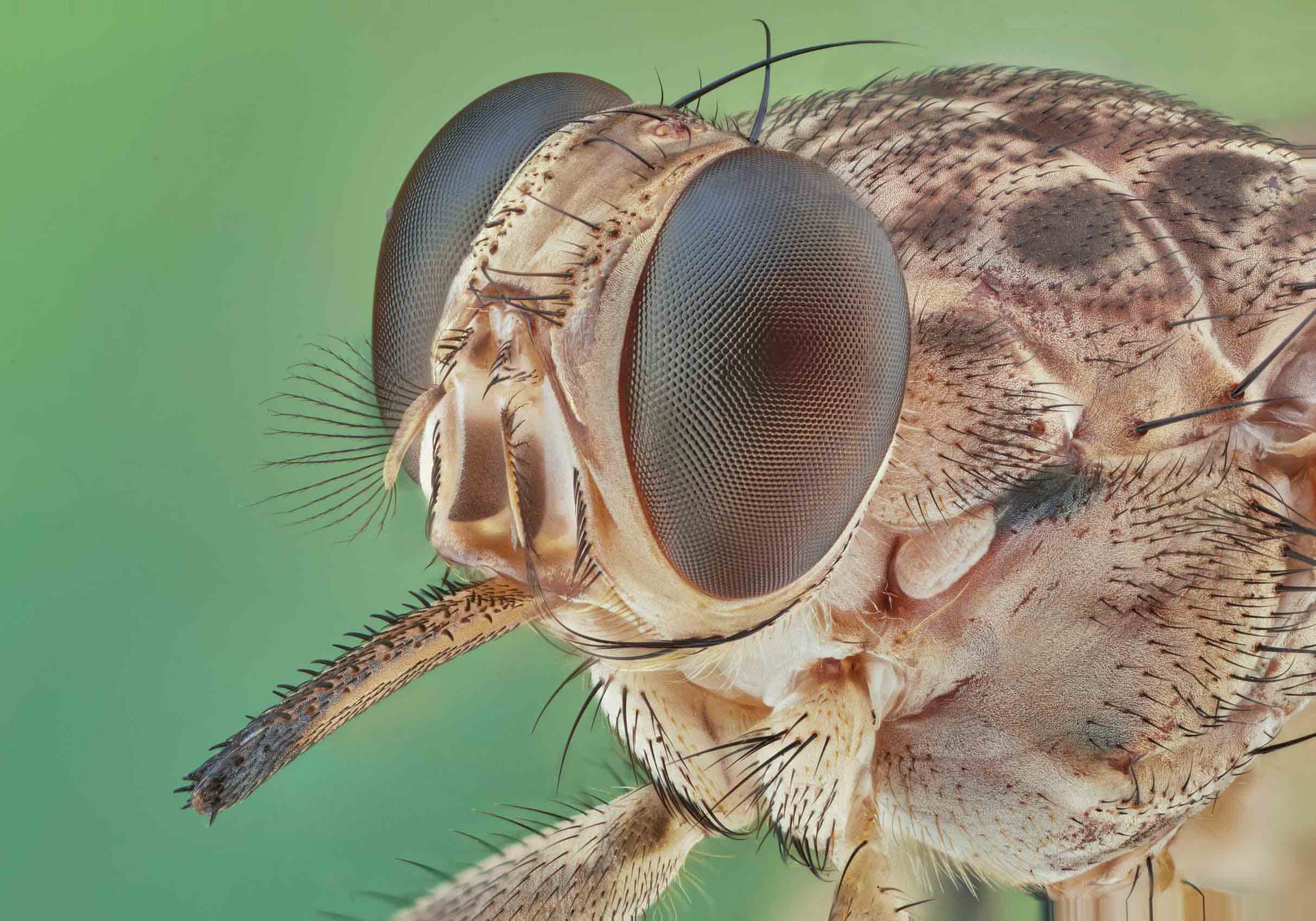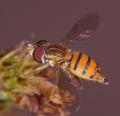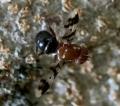Diptera.info :: Identification queries :: Diptera (adults)
Who is here? 1 guest(s)
|
Glossina sp.
|
|
| Flippie |
Posted on 01-10-2021 19:00
|
|
Member Location: Posts: 284 Joined: 11.01.16 |
Visiting a sand forest in a small game park in the Hluhluwe area, North Eastern KZN, South Africa. I was very surprised to see this Tsetse fly in the kitchen of the bungalow we are staying in. Collected yesterday. Not sure which species. Would appreciate assistance keying this out to species level. Thanks, Philip
Flippie attached the following image:  [268.24Kb] |
|
|
|
| Flippie |
Posted on 01-10-2021 19:01
|
|
Member Location: Posts: 284 Joined: 11.01.16 |
Photo 2:
Flippie attached the following image:  [244Kb] |
|
|
|
| Flippie |
Posted on 02-10-2021 08:48
|
|
Member Location: Posts: 284 Joined: 11.01.16 |
Photo 3 added (one more to come): See link to key: We are in Region 1 Looks like fusca group to me However, some features of G longipennis and some of G brevipalpis ... Flippie attached the following image:  [187.77Kb] Edited by Flippie on 04-10-2021 22:00 |
|
|
|
| Nikita Vikhrev |
Posted on 02-10-2021 09:44
|
|
Member Location: Moscow, Russia Posts: 9426 Joined: 24.05.05 |
Hi Philip. When I collected Glossina in Tanzania (https://diptera.info/forum/viewthread.php?forum_id=5&thread_id=71204) I tried to identify it to species but found it a difficult task, more material need for comparison. It seems to me that Tanzanian specimens have proboscis distinctly longer than S-African one? Nikita Vikhrev - Zool Museum of Moscow University |
|
|
|
| Flippie |
Posted on 02-10-2021 15:04
|
|
Member Location: Posts: 284 Joined: 11.01.16 |
Thank you Nikita. I see the link to the key above did not work somehow. I will try again below. The key attached takes a regional approach so only considers some of the flies - those known for that region. According to the key some species are not possible to differentiate without much more material, as you suggest. My hope was that this one was actually one that could key out. However I am having difficulty. Anyway I attach a last picture that I have. Cheers, Philip Key: http://www.fao.org/3/p5178e/P5178E10.htm This fly collected from region 1... Flippie attached the following image:  [275.42Kb] Edited by Flippie on 02-10-2021 15:47 |
|
|
|
| John Carr |
Posted on 03-10-2021 23:30
|
|
Super Administrator Location: Massachusetts, USA Posts: 10362 Joined: 22.10.10 |
South Africa is in region 4 of the key and couplet 1 leads to Glossina brevipalpis (squamal fringe curly, large setae below wing base, wing with dark spot around r-m). |
| Flippie |
Posted on 04-10-2021 16:37
|
|
Member Location: Posts: 284 Joined: 11.01.16 |
Thank you very much John. You are correct that South Africa is Zone 4. Zone 1 is an eastern coastal zone that also stretches down into SA. However I think it keys out similarly whichever’s route is taken. What confused me is that G brevipalpis is generally described as being a darker fly without prominent dark spots in the back. However, all else fits it best and some features of G longipennis, the only possible alternative, as this is clearly Fusca group with shorter proboscis (shorter than width of head) just does not fit. I would think general colour is more variable. See also: Non regional (more complete) key: http://www.fao.org/3/i0535e/i0535e03.pdf Thanks again. Best wishes, Philip Edited by Flippie on 04-10-2021 21:25 |
|
|
|
| Flippie |
Posted on 04-10-2021 21:24
|
|
Member Location: Posts: 284 Joined: 11.01.16 |
HI John I have had a good discussion with a knowledgeable friend who lives in the area and he has it on good authority that only 2 species of Tsetse fly is known for the specific area where I collected the specimen namely G brevipalpis (fusca group) and G austeni (morsitans group). In fact it is clear that these are the only 2 species of Tsetse fly recorded in Zululand, northern KZN, today. See here: https://www.ncbi.nlm.nih.gov/pmc/articles/PMC6238674/pdf/OJVR-83-1172.pdf This would pretty much confirm the specimen as G brevipalpis as you suggested as G austeni falls out immediately on the squamal fringe criteria and absence of large setae below the wing insertion point. Cheers Philip Edited by Flippie on 04-10-2021 22:34 |
|
|
|
| Jump to Forum: |














